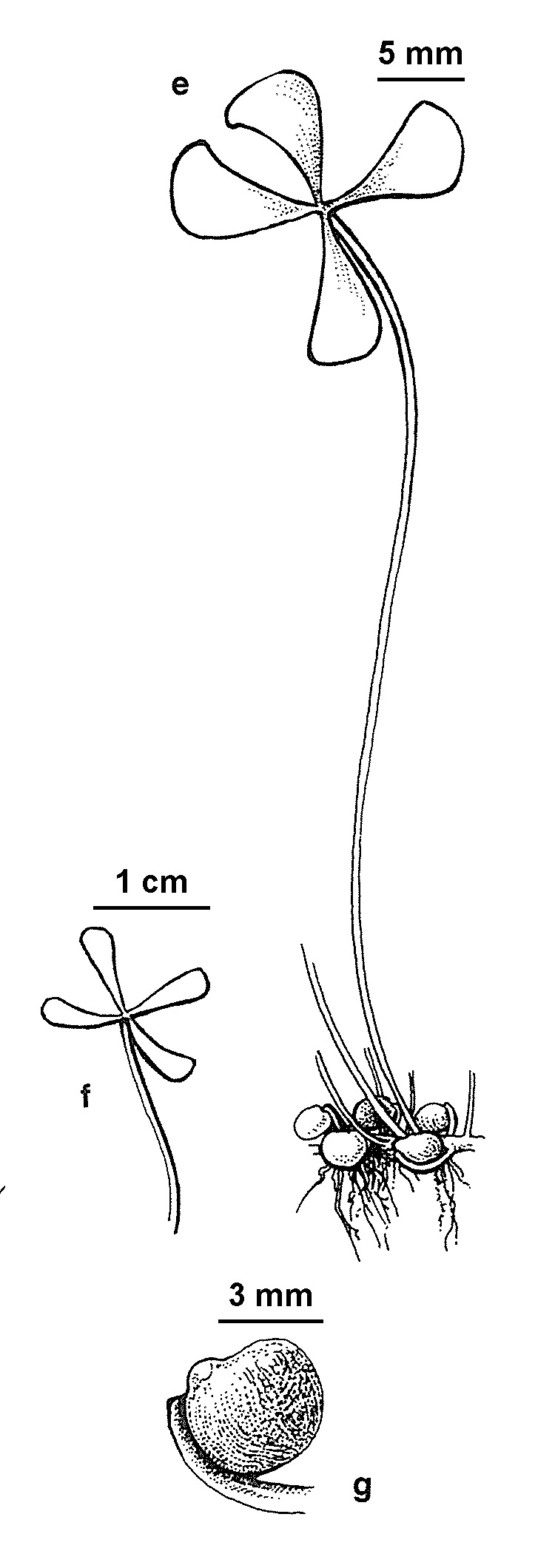Marsilea costulifera
D.L.Jones Narrow-leaf NardooRhizome glabrous except at tips, slender, becoming woody. Fronds clustered at distant nodes, 2–10 cm apart. Stipe 1–12 cm long. Leaflets unequally arranged, oblanceolate to narrowly cuneate, 4–12 mm long, 1–5(rarely to 8)mm broad, surfaces sparsely hairy or glabrous; outer margin straight to slightly rounded, entire. Sporocarps clustered, bean-shaped, but broad, 2–4 mm diam., brown, slightly ribbed, densely hairy, usually with one prominent, rounded, basal tooth, rarely a second, lower tooth present; stalks unbranched, shorter than sporocarp.
LoM, MuM, Wim, GleP, VVP, VRiv, MSB, RobP, MuF, GipP, OtP, Gold, CVU, GGr, DunT, NIS, HSF. All mainland states. Occurs along muddy verges of watercourses, billabongs and temporary water-bodies. Scattered through western Victoria, north from near Horsham to the Murray River upstream to near Tocumwal, with isolated occurrences near Sale and on basalt just west of Melbourne.
Marsilea angustifolia R. Br. s. str. is a more robust plant, with longer leaflets entire or irregularly toothed at apex, and larger, unribbed, spherical sporocarps. It is confined in Australia to the tropics (Chinnock 1986).
Entwisle, T.J. (1994). Ferns and allied plants (Psilophyta, Lycopodiophyta, Polypodiophyta). In: Walsh, N.G.; Entwisle, T.J., Flora of Victoria Vol. 2, Ferns and Allied Plants, Conifers and Monocotyledons, pp. 13–111. Inkata Press, Melbourne.
 Spinning
Spinning



